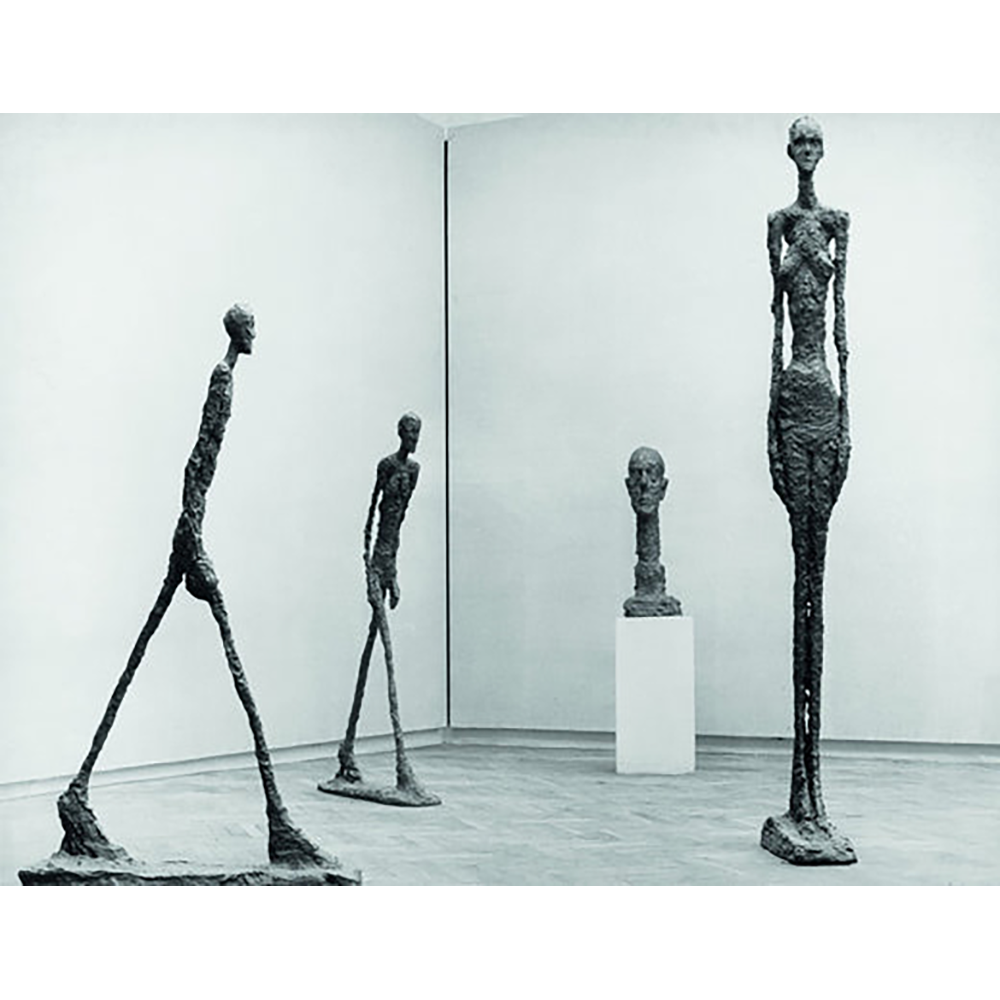A YOUTH SPENT IN A STUDIO

As a student of Antoine Bourdelle, he discovered Greek statuary, African art and Cubism.
In 1930, he created his first symbolic object, the suspended ball. Exhibiting various works alongside those of Joan Miró and Jean Arp, Alberto Giacometti officially joined the Surrealist movement in 1931.
He continued to produce human silhouettes, sharing his studios with his brother and lifelong achiever, Diego, who produced animal sculptures. In 1947, he exhibited Walking Man in New York at the home of his friend, the gallery owner Pierre Matisse, who also hosted his first post-war solo exhibition in 1948.

A major master of modern sculpture, he was awarded the Carnegie Prize in 1961, the Grand Prize for Sculpture at the Venice Biennale in 1962, the Guggenheim Prize in 1964 and the International Grand Prize in 1965.

Alberto Giacometti created his first sculpture, a bust of his brother Diego, during the years 1913 and 1914. From his Greek and African influences, he made the first sculptures of his career: Torso, 1926, Woman spoon, 1927, Cubist composition. Man, 1927.
Then, Giacometti, who frequented artists such as André Masson and Jean Cocteau, got closer to the movement of André Breton.
From then on, he produced a series of surrealist sculptures: Reclining Woman Who Dreams, 1929, Suspended Ball, 1930-1931, The Invisible Object (1934) and explores the characteristic themes of his time such as dreaminess, uncertainty and violence. But in 1935, his return to figurative art marked his break with the Surrealist movement. Giacometti turned to the sculpture of human figures.
His works, The Nose, 1947, and The Cage, 1950, bear witness to his hand preoccupations , namely the representation of space, the relationship of the figure to space, and the relationship between figures . However, it is his sculptures of filiform human silhouettes made in bronze that earned the artist his international reputation .
Inscribed in the collective imagination, his works, L'Homme qui chavire, 1950, Femme Debout, 1953, L'homme qui marche, 1960, are now emblematic of his art.

